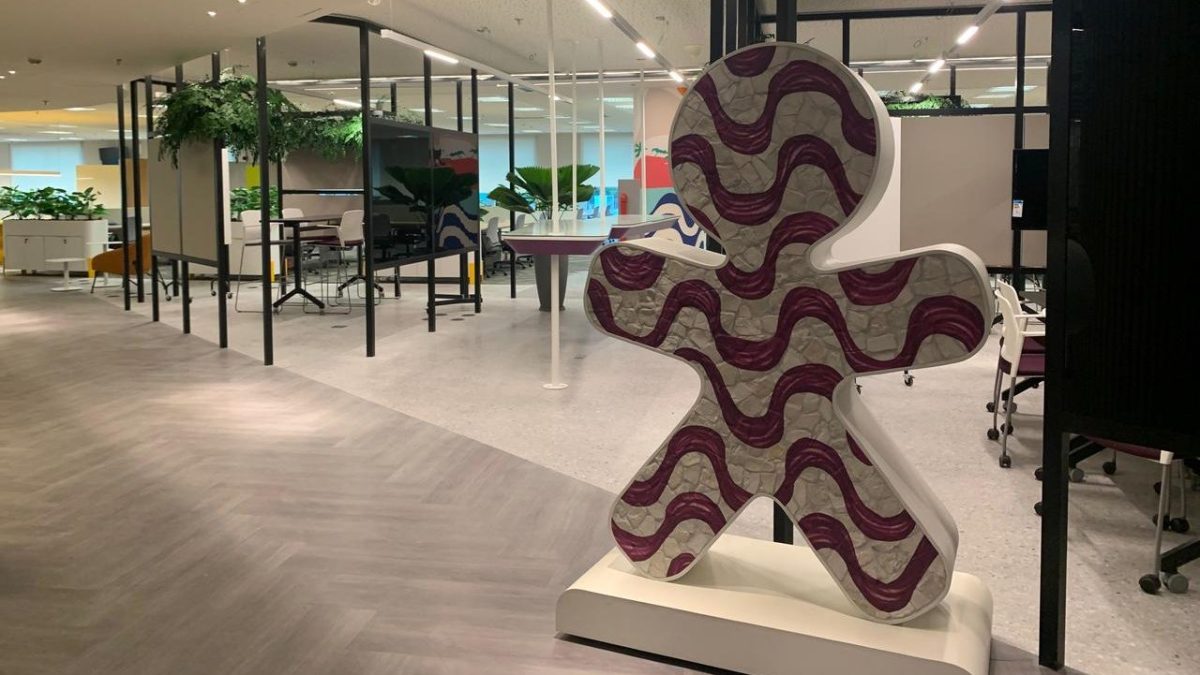“Are you really sure?”That was the question we heard the most when we defined the theme of the project.
I was taking part in a BlackBelt certification programme at our company and I must admit that the question was justified. After all, putting the unpredictability of the human factor at the centre of a Lean 6 Sigma project is not very common.
But thanks to the work and support of very resilient people, we achieved important results for the business, developed relevant skills and methodologies for the operation and, what made it all worthwhile. We learnt a lot!
The purpose of this article is precisely to share these insights.
Define
The first action to start the project was to form the team. People with different backgrounds, cultures and worldviews, different and often opposing views on leadership and people management. In common, a great desire to contribute!
There’s no denying that I was lucky. A group of people, for whom I will be eternally grateful, worked hard from start to finish and were always open-minded about what we were yet to discover.
That was a key point. We all admitted our gap in technical knowledge about human behaviour, we knew we needed some basis to support our path.
We appealed to the leading authorities in the field. Each of the seven members received a book on the subject, from Daniel Kahneman to Daniel Pink and Mihaly Csikszentmihalyi. We made weekly agendas sharing what we had learned, collecting ideas and, above all, understanding how these authors measured behaviour.
With the right team and some theoretical basis, we were able to define the next steps.
Measuring
It was time to go into the field!
It was time to really get to know the group of 6 Vivo shops that would be our object of study. To better understand the operation and the people who make things happen and, of course, to understand what makes some of them perform so well in terms of sales results and others not.
We observed everything, mapped the processes, experienced the routine, tried to put ourselves in their shoes and better understand their day-to-day lives and references. A great experience!
A second approach was to call in a team of people management experts for a series of structured interviews.
We spoke to managers, executives and directors from the commercial areas in various states, HR professionals and also some sales people chosen at random. Each interview had the same objective: to understand what high performance is made of.
These actions, combined with the theoretical knowledge we had obtained at the beginning, generated many hypotheses that we could use to start our data collection.
Once we had this information, we carried out a series of surveys to try to turn all those possible causes into figures.
The collection plan was robust, with more than 150 measurements for each of the consultants, whether through reports, managerial feedback or direct questions, all collected simultaneously in all the participating shops.
We also had two other sources of data, one of which was the Motivation Survey, carried out regularly by our company and packed with important information.
And finally, what I consider to be the highlight of the project, with the support of our HR department, we secured a partnership with a company specialising in human behaviour.
Using professional tools, our consultants underwent a number of interviews with psychologists and neuroscientists, and we were able to collect extremely valuable data for our purposes.
In total, we collected 7696 unique data points in the shops, 2584 in the Motivation Survey and a further 2280 with the company that supported us.
We finally had enough data to carry out our analyses, a must for anyone who likes statistics.
Analysing
All right, I know statistics aren’t unanimous, so I won’t bore you with technical data.
In simple terms, the approach was as follows: as we knew the results of all the consultants, we were able to divide them into 4 groups, with quartile 1 representing the 25% with the best performance.
From there, we forced the processing of our analysis tools to test the correlation of performance with the data we had consolidated and to look for patterns.
As a result, we managed to extract 116 potential causes for high performance from all that jumble of raw data. All of them with a statistically significant level of confidence.
This is where things start to get more fun. A few examples of what we found:
- 70% of consultants think they are in the top performing quartile.
- 85% of consultants in quartile 1 work at the time they feel most energised. In the other groups the figure drops to 60 per cent.
- 30% of people who take less than 30 minutes to get to work are in quartile 1.
- 92% of consultants in the first quartile are the main breadwinners in their household. In the other groups, 67 per cent.
- 85% of consultants in quartile 1 feel professionally fulfilled. In the other groups, only 51 per cent.
- 59% of consultants cite “paying the bills” as their main motivation, followed by “professional growth”.
- 38 per cent of managers were correct in citing their employees’ main motivation.
- 33% of consultants think they don’t use their full potential. None of them are in quartile 1.
At this stage we also debunked some conceptions. Ironically, some of these were potential causes suggested in our interviews with managers and HR staff. Level of education and length of service, for example, did not pass our correlation tests with high performance.
The pattern we found with the partner company was also interesting, “…it can be seen that the personality points that contribute most to the high performance group correlate with the ability to establish self-regulation mechanisms, through good maintenance of balance and emotional vitality. In addition, motivation in the face of more complex challenges and an autonomous and critical attitude contribute to better results.”
One of the psychologists who worked with us gave a surgical summary: “Psychological Security”.
Voilà!
We were ecstatic! After all, much of what we had studied in books was there, appearing before our eyes, in the midst of thousands of numbers. Finding this pattern more present in quartile 1 was the certainty that we were on the right track.
Improve
Action! It was time to use everything we had learnt to add value to the business.
But we didn’t tackle all the potential causes, we used a series of tools to find the root cause and prioritise them according to their impact.
We took the opportunity to conduct a new round of interviews with the experts and carried out sanity tests on the information we had obtained.
Of the 116 candidate causes, 15 were prioritised.
To make it easier to develop actions and understand our findings, we grouped these causes into 3 main groups:
The first grouping concerns the Profile. Having the right people in the right places is the basis for discussing high performance. There is a level of aptitude, however minimal, to do an excellent job. And now we knew what those aptitudes were and, above all, how to measure them.
With the right Profile, we move on to the next point, which is Context. For someone to perform well, they need to be in a favourable environment, with the right level of challenge, aligned expectations, sharp tools and developed skills to do their job. And everything needs to be in synergy with their interests and personal life. There are no shortcuts.
If the first two groups are satisfied, the third will define high performance: Motivation. In the group of people we analysed, we found three main motivations that favoured results.
The first is financial, whether in search of stability or dreams, money is obviously an important driver.
The second motivation we found in our group, which you’ve already heard about, is psychological security. People seek recognition, protagonism, belonging and a space to position themselves.
And finally, career. They need to be clear about their career possibilities and the processes they need to follow. For this to happen, opportunities need to exist. Always with a lot of transparency.
The weight of these motivations can vary according to the personality or moment of each individual, but in our study, these are the most present in the first quartile.
So, if you have someone with the right profile, create a favourable context and understand how you can contribute to their motivations, this is the way we found for the leaders in question to favour high performance.
I learnt something that will certainly guide my vision of leadership for a long time to come.
From then on, it got easier: we developed profile tests to apply to new hires and promotions, created new training courses, structured feedback, set up a self-development plan, with the support of the psychologists and neuroscientists who took part, worked hard to recognise and “give a voice” to people, welcomed them, advertised more vacancies, promoted them?
In short, Profile, Context and Motivation, the triad of high performance.
Control
The results were impressive. Our sales conversion per appointment in the subsequent 12 months was significantly higher than the market, which resulted in revenue growth above our comparative base.
The performance of all quartiles increased, but it was pleasing to see the graph looking like a staircase, with the highest growth in quartile 4. As a result, we reduced the standard deviation of sales results between consultants. There was more balance,
In addition, the project evaluations exceeded expectations, the Motivation Survey also improved, all the managers obtained Yellow Belt certification and the feedback from the participants was very positive.
Certainly, the conclusions and actions we have taken cannot be replicated as a recipe in any scenario. It worked well in that restricted environment and at that specific time. I also have to say that we failed many times during the process.
But the lessons remained!
I’m glad we answered “Yes, we’re sure!” over and over again.
Download the original version here (Portuguese/Brazilian)








